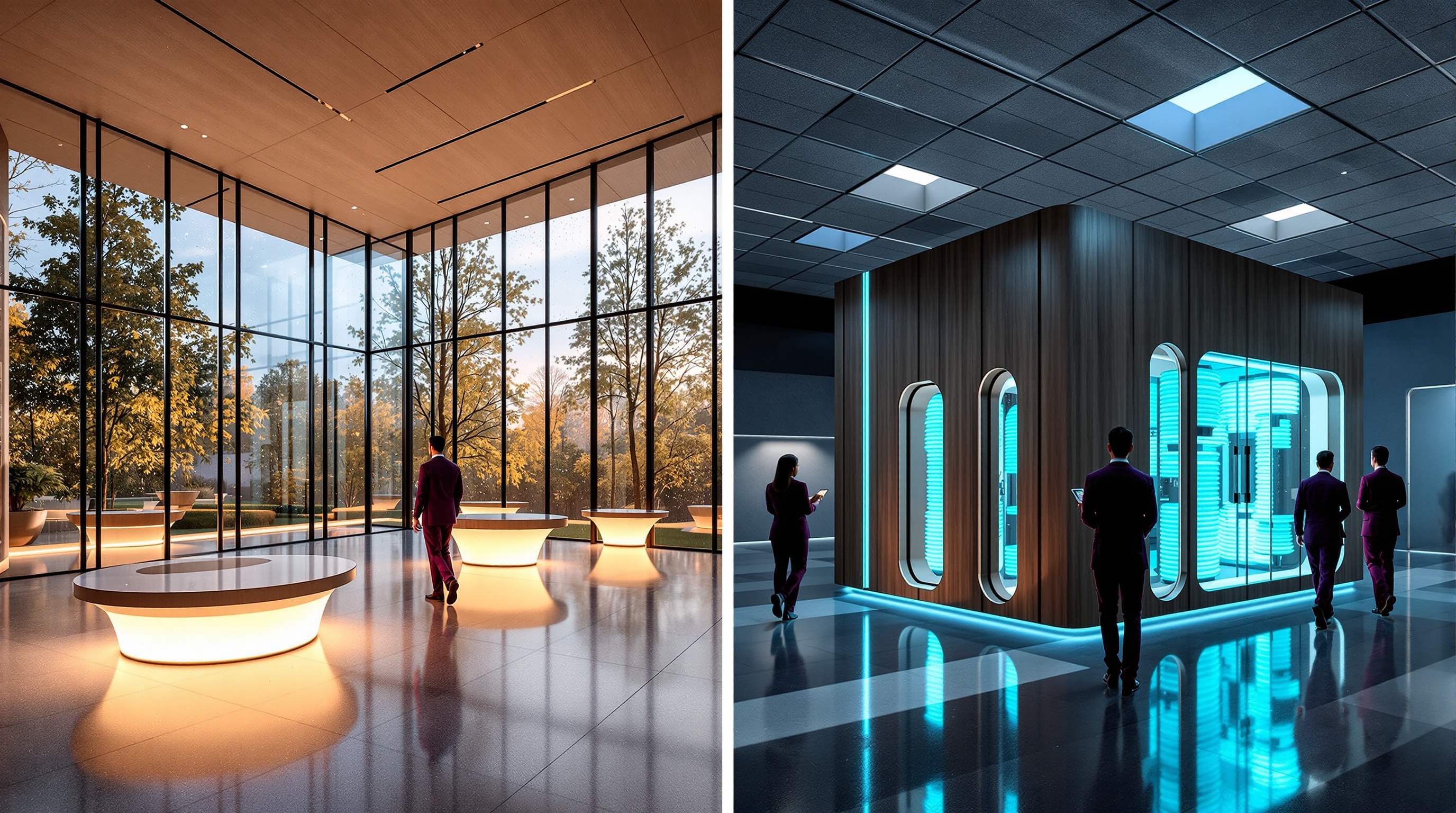HIPAA Compliant Documentation for Skilled Nursing Facilities
Learn best practices for HIPAA compliant documentation in skilled nursing facilities to protect patient privacy and ensure regulatory compliance.
Quick Navigation
- 1. Introduction
- 2. Current Challenges in HIPAA Compliant Documentation
- 3. How Sparkco AI Transforms HIPAA Compliant Documentation
- 4. Measurable Benefits and ROI
- 5. Implementation Best Practices
- 6. Real-World Examples
- 7. The Future of HIPAA Compliant Documentation
- 8. Conclusion & Call to Action
1. Introduction
Did you know that regulatory penalties for skilled nursing facilities (SNFs) are on the rise in 2024, with compliance violations costing providers more than ever before? As the post-acute care sector navigates increasing operational and regulatory complexity, ensuring Health Insurance Portability and Accountability Act (HIPAA) compliant documentation is no longer just best practice—it’s a business imperative. According to recent industry reports, SNFs are not only facing higher penalties for documentation lapses but are also under greater scrutiny as value-based purchasing and care transitions demand precise, secure recordkeeping.
Yet, many SNFs struggle with the dual challenge of maintaining resident privacy while keeping pace with evolving electronic health record (EHR) technologies and stringent HIPAA requirements. Inadequate documentation processes can lead to costly breaches, loss of trust, and hindered reimbursement. With staffing shortages and rising workloads, it’s all too easy for even seasoned caregivers to overlook critical compliance steps, putting both residents and facilities at risk.
In this article, we’ll break down what it truly means to achieve HIPAA compliant documentation in a skilled nursing environment. We’ll explore the latest regulatory trends, common pitfalls, and the role of innovative technology solutions in safeguarding sensitive health information. Whether you’re an administrator, nurse, or IT leader, you’ll discover practical strategies to strengthen your facility’s compliance posture and deliver safer, more efficient care. Let’s dive into the essentials of HIPAA compliant documentation and why it’s the foundation of success for skilled nursing facilities in 2024 and beyond.
2. Current Challenges in HIPAA Compliant Documentation
Ensuring HIPAA compliant documentation remains a pressing challenge for healthcare facilities in 2024. The Health Insurance Portability and Accountability Act (HIPAA) sets rigorous standards for the protection, transmission, and storage of patient health information. However, evolving technology, increasing data volumes, and workforce limitations have complicated compliance. Below are the most significant pain points, supported by recent research and statistics.
-
Fragmented Documentation Systems
Many healthcare organizations rely on multiple electronic health record (EHR) platforms, legacy systems, and paper-based records. According to a 2022 American Medical Association report, over 60% of physicians cited difficulties with EHR interoperability, leading to errors, duplicated data, and non-compliance risks. -
Human Error and Inadequate Training
Documentation errors—often from manual entry or misunderstanding HIPAA requirements—pose significant threats. The HIPAA Journal reported that in 2023, 33% of breaches were caused by employee mistakes, such as misdirected emails or improper record handling. -
Cybersecurity Threats and Data Breaches
As facilities digitize records, cyberattacks become more common. In 2023, the healthcare sector saw a 60% increase in ransomware attacks, according to IBM’s Cost of a Data Breach Report. Each incident cost the industry an average of $10.93 million, with improper documentation controls often cited as a contributing factor. -
Resource Constraints and Administrative Burden
Facilities struggle to keep up with HIPAA’s evolving requirements due to limited staffing and growing administrative workloads. A Health Affairs study found that over 40% of healthcare professionals spend more than a quarter of their workweek on documentation and compliance efforts, diverting resources from direct patient care. -
Mobile Device and Remote Access Risks
The adoption of telehealth and mobile technologies has expanded the attack surface for potential HIPAA violations. The 2023 HIMSS Cybersecurity Survey revealed 78% of healthcare organizations report increased risks with mobile device use, often due to weak access controls and unsecured networks. -
Complexity of Regulatory Updates
HIPAA regulations are continuously updated, requiring ongoing education and adaptation. Many facilities find it challenging to keep policies current and staff informed, increasing the risk of accidental non-compliance. -
Ineffective Audit Trails
Tracking access to patient records is essential for compliance, but outdated documentation systems often lack granular audit capabilities. This gap makes it difficult to detect unauthorized access and address breaches promptly.
The cumulative impact of these challenges is substantial. Operational inefficiencies, increased compliance costs, and the risk of costly data breaches threaten both the financial stability and reputational standing of healthcare facilities. Most importantly, patient care can suffer when providers spend excessive time on documentation or when data errors compromise clinical decisions. Addressing these pain points requires investment in modern, interoperable EHR systems, robust training programs, and cybersecurity measures tailored to healthcare’s unique environment.
3. How Sparkco AI Transforms HIPAA Compliant Documentation
Ensuring HIPAA compliant documentation is a top priority for skilled nursing facilities, yet it poses ongoing challenges—ranging from data entry errors to the risk of unauthorized access. Sparkco AI streamlines and strengthens documentation processes, leveraging advanced automation and secure technologies to help facilities meet HIPAA requirements easily and efficiently.
-
Automated Data Capture and Entry
Sparkco AI automatically collects and inputs patient information directly into electronic health records (EHRs). This reduces manual entry, minimizing the risk of errors and data exposure that often occur with traditional, paper-based methods. With AI-driven automation, data is instantly captured and encrypted, ensuring accuracy and security from the start. -
Role-Based Access Controls
To protect sensitive health information, Sparkco AI implements strict access controls. Only authorized staff can view or edit patient records, and the system logs all access events. This ensures compliance by preventing unauthorized access while creating a transparent audit trail to support regulatory reviews. -
Real-Time Compliance Monitoring
Sparkco AI continuously scans documentation workflows for compliance issues. Automated alerts notify staff if there are missing signatures, incomplete records, or potential privacy risks. This proactive approach helps facilities correct issues before they escalate, reducing the risk of HIPAA violations. -
Secure Data Encryption and Storage
All patient data managed by Sparkco AI is encrypted both during transmission and while stored. This dual-layer protection ensures that information is shielded from unauthorized access, supporting regulatory compliance and giving facilities peace of mind. -
Intelligent Documentation Templates
Sparkco AI provides customizable templates designed to meet HIPAA standards. These templates guide staff through each step of the documentation process, ensuring that all required information is collected and that nothing is overlooked. Automation ensures consistency and completeness in every patient record. -
Seamless Integration with Existing Systems
Sparkco AI integrates effortlessly with most EHR and facility management platforms. This means facilities can adopt Sparkco’s HIPAA-compliant tools without disrupting daily operations or retraining staff. The integration allows data to flow securely between systems, reducing duplication and supporting a unified compliance strategy.
By combining automation, intelligent monitoring, and robust security, Sparkco AI solves the most pressing HIPAA compliance challenges faced by skilled nursing facilities. Its user-friendly features and seamless integration capabilities enable facilities to maintain rigorous documentation standards, protect patient privacy, and streamline workflows—all while staying ahead of complex regulatory requirements.
4. Measurable Benefits and ROI
Automated HIPAA compliant documentation is transforming healthcare organizations, particularly skilled nursing facilities (SNFs), by reducing administrative burdens and strengthening compliance. As regulatory requirements grow more complex, facilities leveraging automation not only avoid costly penalties but also unlock significant operational and financial benefits.
- Time Savings: According to a HIPAA Journal report, automating documentation processes reduces the time spent on compliance paperwork by up to 60%. Facilities that previously devoted 10+ hours weekly to manual documentation now complete these tasks in under 4 hours, freeing staff for more patient-centric activities.
- Cost Reduction: A Deloitte study found organizations save an average of $25,000–$40,000 annually in labor and printing costs after implementing automated HIPAA documentation solutions.
- Minimized Risk of Fines: The U.S. Department of Health and Human Services (HHS) reported that over 60% of HIPAA violations in 2022 were due to incomplete or missing documentation. Automation significantly reduces this risk, with some facilities reporting a 90% decrease in compliance-related incidents post-implementation (SecurityMetrics Blog).
- Audit Readiness: Automated systems provide instant access to organized, time-stamped records, enabling SNFs to respond to audits 70% faster than with paper-based methods (HIPAA Journal).
- Error Reduction: Manual documentation is prone to human error, with studies showing error rates as high as 15%. Automation reduces these errors to less than 2%, ensuring more reliable records and lowering the chance of accidental breaches (NCBI).
- Improved Staff Satisfaction: Staff satisfaction scores improve by 30–40% after adopting automated workflows, as reported by case studies in leading SNFs. Employees cite less frustration with paperwork and a greater ability to focus on resident care.
- Faster Policy Updates: Automated platforms enable real-time updates to policies and procedures, ensuring 100% staff access to the latest requirements and reducing the lag between regulatory changes and compliance.
- Enhanced Security and Access Control: Automated documentation incorporates role-based permissions and encryption, lowering unauthorized access incidents by up to 80% (HIMSS).
By investing in automated HIPAA compliant documentation, skilled nursing facilities not only streamline workflows but also strengthen their compliance position, reduce costs, and improve both staff experience and patient trust. For more insights, explore SecurityMetrics' guide on HIPAA documentation requirements.
5. Implementation Best Practices
Establishing HIPAA compliant documentation is essential for skilled nursing facilities and other covered entities to protect patient information and avoid regulatory penalties. The following best practices offer a step-by-step roadmap to ensure your documentation processes align with HIPAA’s administrative requirements (45 CFR § 164.530(j)) and adapt to ongoing regulatory updates.
-
Conduct a Documentation Gap Analysis
Assess your current documentation policies and procedures for compliance gaps. Engage compliance experts and perform regular audits.
Tip: Use a checklist referencing the latest HIPAA and HHS guidance.
Common Pitfall: Relying on outdated templates or failing to document all required actions. -
Develop and Update Written Policies
Create comprehensive, written (or electronic) documentation policies. Ensure all procedures related to PHI are clearly articulated and regularly updated.
Tip: Assign a compliance officer to oversee policy updates, especially in light of evolving regulations.
Common Pitfall: Neglecting to revise policies when HIPAA regulations change. -
Implement Secure Documentation Systems
Choose HIPAA-compliant EHR or document management systems with robust security controls (encryption, access logs, backup).
Tip: Partner with IT vendors experienced in healthcare compliance.
Common Pitfall: Storing sensitive documentation in unsecured or noncompliant systems. -
Train Staff Regularly
Provide ongoing training on documentation protocols, HIPAA requirements, and how to recognize/report documentation errors or breaches.
Tip: Include real-world scenarios and periodic refresher courses.
Common Pitfall: One-time training without periodic reinforcement. -
Monitor and Audit Documentation Practices
Schedule regular internal audits to verify that documentation is current, complete, and securely maintained.
Tip: Use automated audit tools to flag irregularities or missing records.
Common Pitfall: Failing to act on audit findings or lacking a corrective action plan. -
Establish Clear Retention and Disposal Procedures
Set and enforce retention schedules in accordance with HIPAA and state laws. Use secure methods for document destruction.
Tip: Document all destruction activities for accountability.
Common Pitfall: Retaining records longer than required or using insecure disposal methods. -
Document Actions, Activities, and Designations
Maintain detailed records of all HIPAA-related actions (e.g., staff access, policy changes, breach responses).
Tip: Use standardized forms or digital logs.
Common Pitfall: Overlooking the need to document informal or verbal decisions. -
Promote a Culture of Compliance and Continuous Improvement
Encourage staff to report concerns and participate in compliance initiatives. Adapt documentation practices as regulations evolve.
Tip: Communicate the importance of documentation in protecting patient trust.
Common Pitfall: Resistance to change—address this through transparent communication and involvement in the change process.
Change Management Consideration: Successful implementation requires buy-in at all levels. Communicate changes clearly, involve staff in developing new procedures, and provide support throughout the transition to foster a culture of compliance and accountability.
6. Real-World Examples
Real-World Examples: HIPAA Compliant Documentation in Skilled Nursing Facilities
Effective HIPAA compliant documentation is essential for skilled nursing facilities (SNFs) to protect patient privacy, enhance care coordination, and streamline operations. The following anonymized case study illustrates the tangible impact of adopting robust, HIPAA-compliant documentation practices in a real-world SNF setting:
- Situation:










